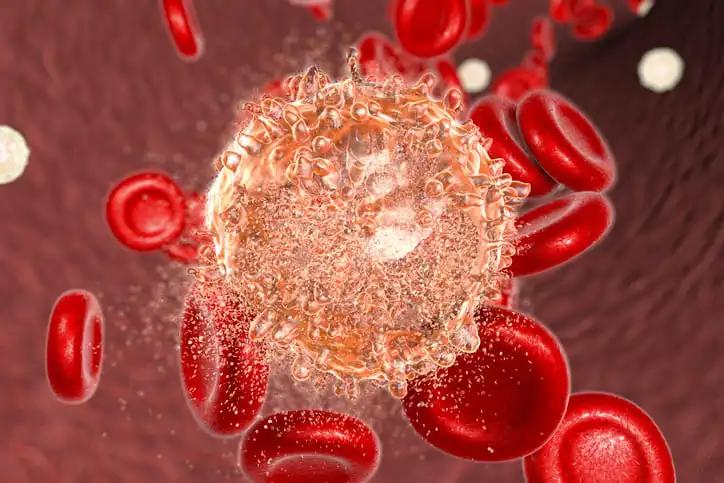KEY TAKEAWAYS
- The BGB-A317 phase 3 study (NCT03663205) aimed to investigate the association between longitudinal ctDNA levels and clinical outcomes in patients with nonsquamous or squamous NSCLC treated with Tislelizumab (anti-PD-1) plus chemotherapy.
- Blood samples were collected at baseline, first response, and progressive disease. ctDNA levels were measured and categorized as undetectable or detectable.
- The study concluded that paired ctDNA analysis showed significantly decreased ctDNA levels in both studies from baseline to first response. Patients with undetectable ctDNA status at first response had notably longer median PFS and OS than those with detectable ctDNA.
This study aimed to investigate the potential of circulating tumor DNA (ctDNA) as a biomarker for monitoring response to immunotherapy in patients with nonsquamous or squamous non-small cell lung cancer (NSCLC) who received first-line treatment with anti-PD-1 therapy and chemotherapy. The study retrospectively analyzed longitudinal ctDNA levels in 1,018 patients from two clinical trials, RATIONALE-304 and RATIONALE-307, to explore their association with clinical outcomes. Blood samples were collected at baseline, first response, and progressive disease, and ctDNA levels were assessed using the OncoScreen Plus520 assay.
The data were analyzed using the Wilcoxon sign-rank test, Kaplan-Meier methodology, and PD-L1 expression stratified Cox model. The study found that ctDNA levels were significantly associated with progression-free survival (PFS) and overall survival (OS) in both NSCLC cohorts. The results suggested that ctDNA monitoring could provide an early indication of treatment response and guide treatment decisions. In the RATIONALE-304 and RATIONALE-307 studies, 217 and 238 patients with NSCLC were treated with TIS plus chemotherapy, respectively. Among these patients, 35%, 18%, and 14% had ctDNA results at baseline (BL), first response (FR), and progressive disease (PD) in RATIONALE-304, while 34%, 27%, and 14% had ctDNA results at BL, FR, and PD in RATIONALE-307. Analysis of paired ctDNA samples revealed a significant decrease in ctDNA levels from BL to FR (P<0.0001 in 304 and 307), while no significant change was observed from BL to PD.
Patients with undetectable ctDNA levels at FR had a longer median PFS and OS than those with detectable ctDNA levels. However, neither study found no significant association between baseline ctDNA status and clinical outcomes. These findings suggested that ctDNA may serve as a potential surrogate biomarker for the efficacy of first-line TIS in combination with chemotherapy for NSCLC. Further prospective validation is needed to confirm these results.
Source: https://www.abstractsonline.com/pp8/#!/10828/presentation/9991
Clinical Trial: https://clinicaltrials.gov/ct2/show/NCT03663205/
Lu S, Wang J, Sun M, Zhao J, Hu C, Wang M, Zhou J, Song Y, Zhou Q, Zhang J, Shi Y, Huang R, Wu X, He W, Qu X, Zhang Y, Wang H, Shen Z, Yu Y. LB289 / 2 – Longitudinal ctDNA levels and clinical outcomes of first-line (1L) tislelizumab (TIS) + chemotherapy (chemo) treatment for advanced non-small cell lung cancer (NSCLC) in the RATIONALE-304 and 307 studies. https://www.abstractsonline.com/pp8/#!/10828/presentation/9991



